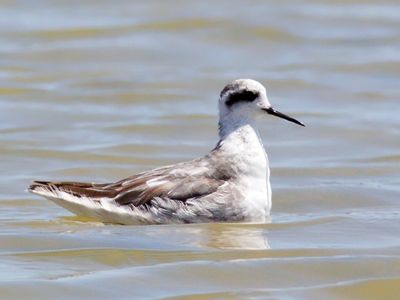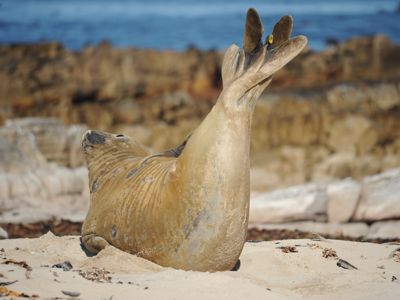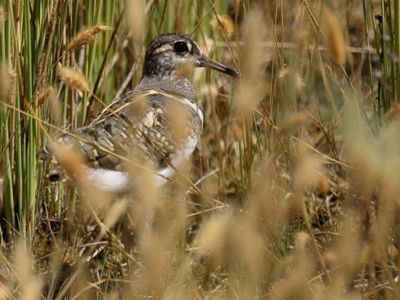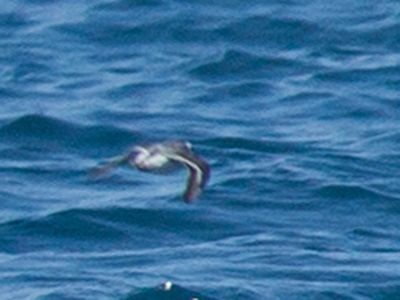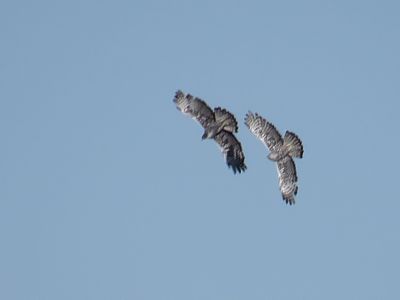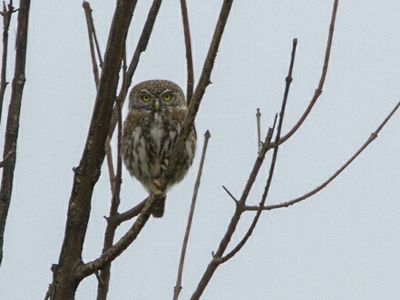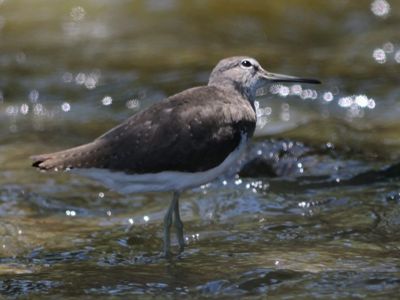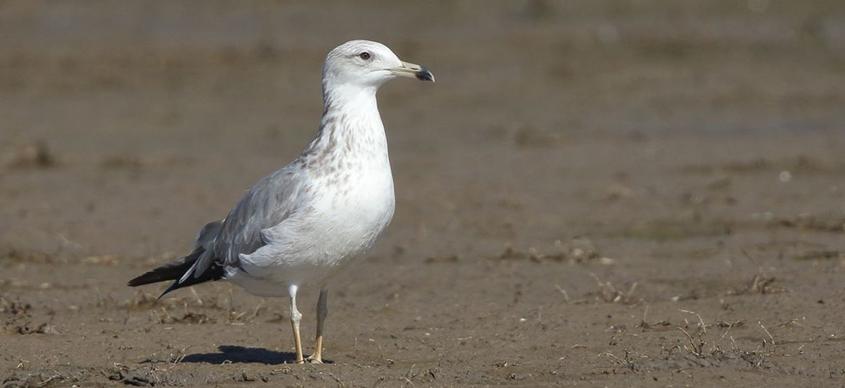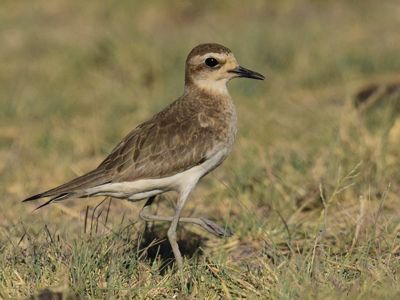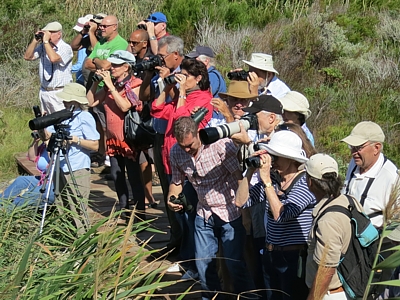SA Rare Bird News Report - 09 November 2015
Trevor Hardaker
| ||||
SA Rare Bird News is proud to be associated with the following brands: | ||||
|
|
| ||
|
|
| ||
| ||||
This is the Southern African Rare Bird News Report issued at 20h00 on Monday, 09 November 2015. Information has been gleaned from various websites, email groups as well as from individual observers who have passed on their sightings. This report cannot be taken as being totally comprehensive as it is based only on information made available at the time of writing. All bird sightings reported here are reported in good faith based on information as provided by the observers. Any inaccuracies are totally unintentional and the writer cannot be held liable for these. For those who may have only joined the group recently and are interested in finding out what has been seen in the past, previous reports can be viewed at http://groups.google.co.za/group/sa-rarebirdnews | ||||
|
| |||
Starting in the Western Cape, several pelagic trips went out on Saturday, Sunday and today with only a single SPECTACLED PETREL being reported between all of them. One of the more bizarre records of the last few days concerned a PALE CHANTING GOSHAWK seen near Cape Point yesterday (late news also received of one seen from the Twelve Apostles Hotel on Wednesday, so almost certainly the same individual) whilst another interesting record was that of a LARK-LIKE BUNTING seen at Rooiels on Saturday. Elsewhere, lingering rarities included both RED-NECKED PHALAROPES still at Kliphoek Salt Pans in Velddrif throughout the weekend (at least one still present there earlier today) whilst the AFRICAN JACANA was also still present at Strandfontein Sewage Works earlier today as well.
Also creating some interest amongst locals, the SOUTHERN ELEPHANT SEAL that was on the beach at Olifantsbos near Cape Point remained present there throughout the weekend. Interestingly, this animal is tagged and information provided indicates that it was first tagged as a young animal at Buffels Bay near Cape Point about 2 years ago, so one has to wonder whether it has remained in the area going unnoticed all this time or whether it indeed went back down south (or moved elsewhere in the region) and has since returned to the southern Peninsula. Please also just bear in mind, if you do go to view these vagrant mammals, that one should keep a fair distance from them, so as not to stress them too much and also not get between them and the water if they are up on the beach as they might then feel trapped with no obvious escape route.
Up in the Northern Cape, a single GREATER PAINTED SNIPE was located earlier today in Augrabies National Park, slightly out of range for this species. | ||||
|
| |||
|
| |||
Red-necked Phalarope at Velddrif © Tinus Lamprecht | Red-necked Phalarope at Velddrif © Linda du Plessis | |||
|
| |||
|
| |||
Southern Elephant Seal at Olifantsbos © Matthew Syphus | Greater Painted Snipe at Augrabies National Park © Richard Okkers | |||
|
| |||
Over in the Eastern Cape, at least 2 AUSTRALIAN GANNETS were still present on Bird Island in Algoa Bay yesterday.
Up the coast in Kwazulu Natal, a pelagic trip out of Durban yesterday turned up a single RED PHALAROPE, still a very rare bird in the province and the first on recent pelagic trips here, whilst both recent GREEN SANDPIPERS were still around on the weekend too, the one at Darvill Bird Sanctuary was along the river above the sewerage outlet until at least Saturday whilst the other, at Kumahlahla hide in Mkhuze Game Reserve, was still on view there yesterday. | ||||
|
| |||
|
| |||
Red Phalarope on Durban pelagic trip © Niall Perrins | Green Sandpiper at Mkhuze Game Reserve © Vaughan Meyrick | |||
|
| |||
In Gauteng, the AFRICAN FINFOOT was still present at Rietvlei Nature Reserve until at least Friday afternoon where it was seen near the Otter bridge whilst the AYRES' HAWK EAGLES continued to perform near Weskoppies Hospital in Pretoria throughout the weekend (best viewed from the hilltop above the prison in Pretoria near the end of John Keevy Drive at S 25.76822 E 028.17682). Also of interest, a PEARL-SPOTTED OWLET was reported from Hamerkop Bird Sanctuary in Florida on Saturday, a rather odd record so far south and also within an urban area. Earlier today, there was also some excitement when a single RUDDY TURNSTONE was located about halfway along the tar road to the picnic site at Marievale Bird Sanctuary near Nigel whilst a single GREEN SANDPIPER was also reported from Rietvlei Spruit earlier today too. Many of you will also be aware of the satellite tagged female EUROPEAN HONEY BUZZARD that was last reported early last week up in the Caprivi Strip of Namibia. Well, in the intervening days, she has now crossed Botswana and travelled into South Africa and, yesterday, she was just south of Johannesburg as the map below will show.
Across in Mpumalanga, Mkhombo Dam continued to deliver on the weekend with the LESSER BLACK-BACKED GULL and several CASPIAN PLOVERS still around whilst yesterday, no fewer than 3 BLACK-TAILED GODWITS and a single SANDERLING were also reported there. | ||||
|
| |||
|
| |||
Ayres’ Hawk Eagles over Weskoppies Hospital © Alan Bedford-Shaw | Pearl-spotted Owlet at Hamerkop Bird Sanctuary © Bradwin Adendorff | |||
|
| |||
|
| |||
Ruddy Turnstone at Marievale Bird Sanctuary © Mark Tittley | Green Sandpiper at Rietvlei Spruit © Wilna Steenkamp | |||
|
| |||
| ||||
Lesser Black-backed Gull at Mkhombo Dam © Michal Groenewald | ||||
| ||||
| ||||
Latest position of female European Honey Buzzard | ||||
| ||||
Up in Limpopo, a GREEN SANDPIPER was also located at the Levuvhu bridge near Pafuri in the Kruger National Park on Friday.
Moving north into Zimbabwe, yet another GREEN SANDPIPER was present last week along the river in Mana Pools National Park until at least Friday.
And finally, in Botswana, a group of no fewer than 5 CASPIAN PLOVERS were located yesterday at Lake Xau west of Mopipi in the central part of the country. | ||||
|
| |||
|
| |||
Green Sandpiper near Pafuri © Dave Minney | Caspian Plover at Lake Xau © Ian White | |||
|
| |||
Thank you to all observers who have contributed their records. Please continue to send through any reports of odd birds as well as continued updates on the presence of rarities already previously reported, no matter how mundane you think they may be. Even if you think someone else has probably sent in a report, rather send the report yourself as well. The only way to improve this service and to make it as useful as possible to everyone is if it can be as comprehensive as possible.
Kind regards Trevor -----------------------------------------------------------------------
TREVOR HARDAKER Cape Town, South Africa
Follow our local exploits in the field at: http://hardakerwildlife.wordpress.com/
See our photos and trip reports at:
ZEST for BIRDS Pelagics, rarity photos, listing clubs and more:
SA RARE BIRD NEWS Get the latest rarity news by joining at: http://groups.google.co.za/group/sa-rarebirdnews
SOUTHERN AFRICAN RARITIES Online database of all SA rarities ------------------------------------------------------------- |
| |||
| ||||
| ||||
| ||||
| ||||
| ||||
| ||||
| ||||




